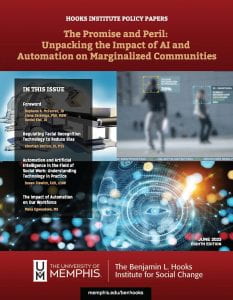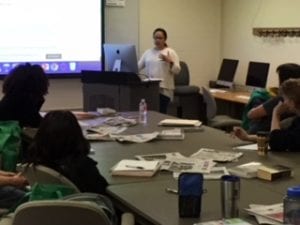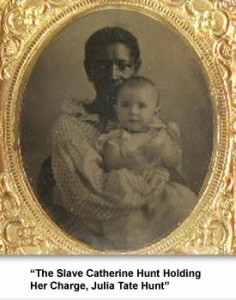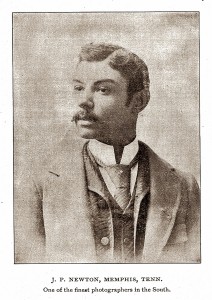When I am invited to share my thoughts and experiences with people, I start with a self-location exercise. It’s important for me to locate myself within my community, and for those I am sharing with to locate themselves too, so we can attempt to be in community. Self-location helps us both identify how far we will have to travel (cognitively, emotionally) to do this. Will we meet in the middle? Will one of us have to travel further to reach the other? Are we already on this path together? We must locate ourselves in relation to our destination before we get started.
And so, I ask: Who are you? Who are your people? Who is your community?
How did you get here, to this land of the Chickasaw, the Choctaw, the Quapaw? Do you know the indigenous history of this land we occupy, or only settler narratives?
How much do you want to learn?
Let me locate myself for you. I said “we” and “us” in the previous paragraphs, but I am not Native American. I feel compelled to be explicit about this because academia has been infiltrated with pretendians (people pretending to be Native American) who benefit intellectually and financially from ethnic identity fraud. I am hapa haole, that is to say I am both white and kanaka maoli (Native Hawaiian). I am both settler and indigenous, but not indigenous to the Americas.
Having colonization in common unites many indigenous folks. It is why we find hope, support, and solace in celebrating Native American Heritage month with our North American kin. This shared experience is why I use “we” and “us” pronouns, because this month often presents opportunities for all indigenous people to join Native Americans in sharing their critiques of US colonialism through the lens of Native American history, which tends to be more familiar to the average US American than my own Hawaiian past. I invite you to learn more about this month, and Thanksgiving in particular, from Native Americans themselves rather than from this hapa haole. Read the suppressed speech of Wamsutta James, who in 1970 was invited to commemorate the arrival of the Pilgrims at Plymouth Rock and subsequently silenced for sharing the Wampanoag’s perspective of that fateful event. Read what Phillip Deloria has to say about the invention of Thanksgiving and the ways our education system reinforces the dehumanization of indigenous peoples. Consider the distinction Christine Nobiss makes between Thanksgiving and Truthsgiving celebrations, and how that distinction might come to have meaning in your holiday traditions.
When I suggest that we meditate on atonement during Thanksgiving, most non-Natives around me balk. Atonement is uncomfortable. But when we begin to atone, we can begin to move forward. If you are ready for this journey, I can suggest some easy ways to take your first steps. You can give a voluntary land tax to indigenous peoples. You can learn the Native histories of the Native land you occupy (we have great historians at the UofM)! You can support indigenous peoples in the present. You can speak out against racist and incorrect Thanksgiving plays and portrayals. You can stand with your friends and coworkers and community members when they stand against dehumanization. Find a way to honor Native Americans in November and beyond by honoring their requests for change. And you can continue to relocate yourself in this journey, to figure out when you’ve wandered, or fell back into the habit of unseeing and unhearing indigenous peoples. And if you’ve left the path, you can always join us again.
Bio: Amanda Lee Keikialoha Savage (she/her) teaches history at the University of Memphis and is an academic advisor for history majors. She is both kanaka maoli (Native Hawaiian) and haole (white of European descent), and much of her community work involves straddling that line. In addition to her teaching and mentoring duties at U of M, Ms. Savage is the co-creator of the Tiger Food Pantry, chairs the Pride and Equity Alliance, and is the on the organizing committee for the West Tennessee chapter of United Campus Workers. She chairs the Community Initiatives Committee for the Community Foundation of Greater Memphis, and is the co-founder of Native RITES, an indigenous-led organization advocating for educational and political sovereignty for Native peoples in the Mid-South. She works with community organizations and academic institutions to help people understand how colonialism informs their pedagogy and worldviews and how to begin the lifelong process of decolonization.

 By Khortlan Becton, JD, MTS, The Restorative Education Institute (1)
By Khortlan Becton, JD, MTS, The Restorative Education Institute (1) To say the world is in the throes of a technological revolution spearheaded by artificial intelligence (“AI”), and automation, may be one of the most understated observations of this century. While “Fake News” ran rampant on social and other media and influenced the November 2016 presidential election, that election provided ample warning of how media manipulated to mislead can have enormous negative consequences for every segment of life, including personal and employment relationships, national security, elections, media, etc.
To say the world is in the throes of a technological revolution spearheaded by artificial intelligence (“AI”), and automation, may be one of the most understated observations of this century. While “Fake News” ran rampant on social and other media and influenced the November 2016 presidential election, that election provided ample warning of how media manipulated to mislead can have enormous negative consequences for every segment of life, including personal and employment relationships, national security, elections, media, etc. It is ironic, if not exhausting, that seemingly basic issues, like the right to vote, remain at the forefront of dissension in American life. However, as Coretta Scott King poignantly stated, the struggle for civil rights “is a never-ending process. Freedom is never really won. You earn it and win it in every generation.” When speaking about civil rights, the late Dr. Benjamin L. Hooks would say to young people, “it’s your time now.” The Benjamin L. Hooks Institute for Social Change programming seeks to fulfill the mandate of the civil rights movement and its legacies.
It is ironic, if not exhausting, that seemingly basic issues, like the right to vote, remain at the forefront of dissension in American life. However, as Coretta Scott King poignantly stated, the struggle for civil rights “is a never-ending process. Freedom is never really won. You earn it and win it in every generation.” When speaking about civil rights, the late Dr. Benjamin L. Hooks would say to young people, “it’s your time now.” The Benjamin L. Hooks Institute for Social Change programming seeks to fulfill the mandate of the civil rights movement and its legacies. Over the last two weeks, many people, both black and white, have contacted me expressing their outrage over the murder of George Floyd on May 25, 2020 by the police asking “What can I do? Where do we start to fix this problem?” They, like me, know that police brutality and racism are not just a Black people’s problem; it’s an American problem, which makes it a white people’s problem too.
Over the last two weeks, many people, both black and white, have contacted me expressing their outrage over the murder of George Floyd on May 25, 2020 by the police asking “What can I do? Where do we start to fix this problem?” They, like me, know that police brutality and racism are not just a Black people’s problem; it’s an American problem, which makes it a white people’s problem too. The horrific murder of George Floyd is a call to action by each of us to end police brutality and racism. Only in this way, can African Americans and other brown people enjoy life, liberty and the pursuit of happiness – a promised made to each us in the Declaration of Independence and by the U.S. Constitution. We the People have work to do. Please get started. Now.
The horrific murder of George Floyd is a call to action by each of us to end police brutality and racism. Only in this way, can African Americans and other brown people enjoy life, liberty and the pursuit of happiness – a promised made to each us in the Declaration of Independence and by the U.S. Constitution. We the People have work to do. Please get started. Now. This year’s winner stood out among this outstanding group. The winner of the 2017 Hooks Institute National Book Award, Locking Up Our Own by James Forman, Jr.’s, is a tremendous contribution to today’s vibrant discussions about mass incarceration and the criminal justice systems that continue to devastate black communities. It provides a layer of complexity to those discussions by investigating local decisions that gave rise to mass incarceration, decisions that were often endorsed by black leaders. With a compelling personal touch, Forman frames the problem as a series of smaller decisions rather than as a massive conspiracy, providing a sense of hope that there is an opportunity to incrementally confront an incrementally-constructed system. This book is a worthy winner of the Hooks Institute’s National Book Award as it illuminates readers on a central civil rights struggle of our time.
This year’s winner stood out among this outstanding group. The winner of the 2017 Hooks Institute National Book Award, Locking Up Our Own by James Forman, Jr.’s, is a tremendous contribution to today’s vibrant discussions about mass incarceration and the criminal justice systems that continue to devastate black communities. It provides a layer of complexity to those discussions by investigating local decisions that gave rise to mass incarceration, decisions that were often endorsed by black leaders. With a compelling personal touch, Forman frames the problem as a series of smaller decisions rather than as a massive conspiracy, providing a sense of hope that there is an opportunity to incrementally confront an incrementally-constructed system. This book is a worthy winner of the Hooks Institute’s National Book Award as it illuminates readers on a central civil rights struggle of our time.



 Race, Representation, and Photography in 19th Century Memphis: from Slavery to Jim Crow, is an in-depth study of African American visual culture and history. Using Victorian era photographs, pictorial illustrations, and engravings from local and national archives, I examine intersections of race and image within the context of early African American community building. The city of Memphis serves as the case study, wherein black agency and photographic images intersect to reveal the hidden history of racialized experiences in the urban south during slavery and freedom following the Civil War. My interdisciplinary research links the social history of photography with the fields of art history, visual culture, critical race studies, gender, and southern studies.
Race, Representation, and Photography in 19th Century Memphis: from Slavery to Jim Crow, is an in-depth study of African American visual culture and history. Using Victorian era photographs, pictorial illustrations, and engravings from local and national archives, I examine intersections of race and image within the context of early African American community building. The city of Memphis serves as the case study, wherein black agency and photographic images intersect to reveal the hidden history of racialized experiences in the urban south during slavery and freedom following the Civil War. My interdisciplinary research links the social history of photography with the fields of art history, visual culture, critical race studies, gender, and southern studies.







